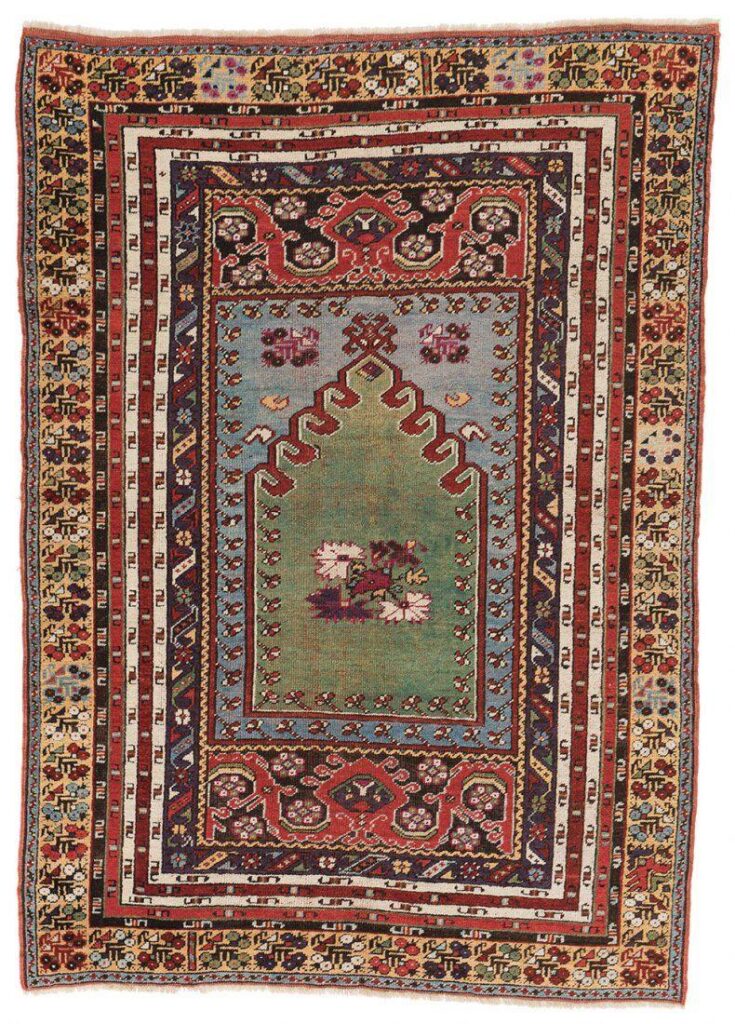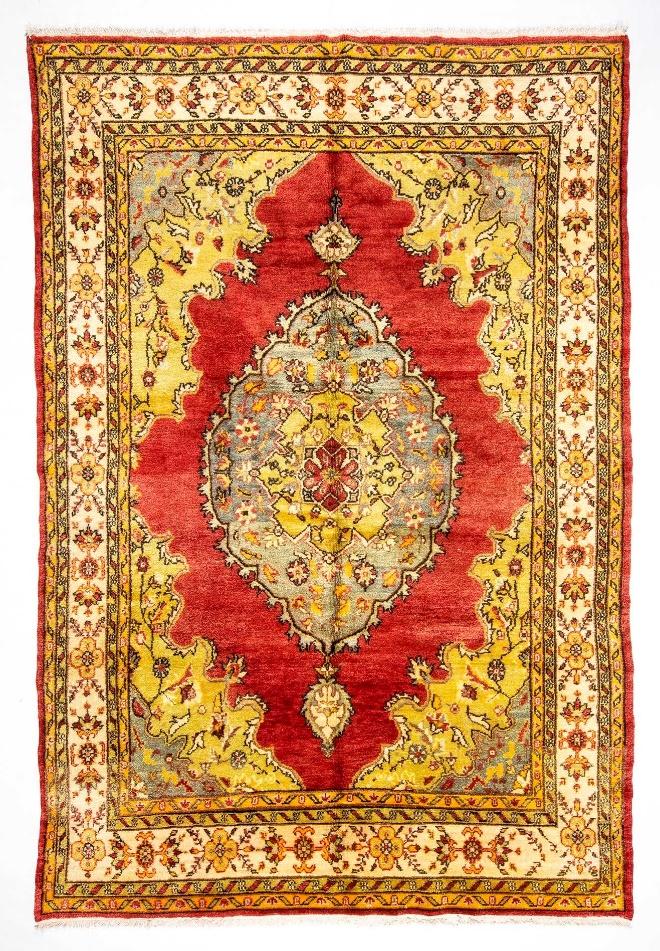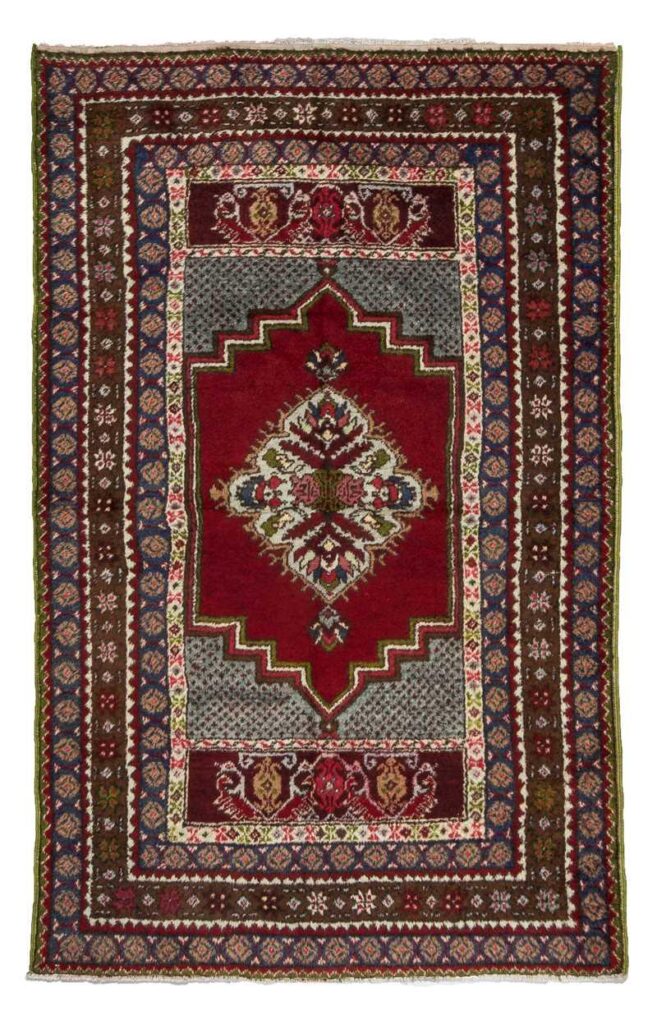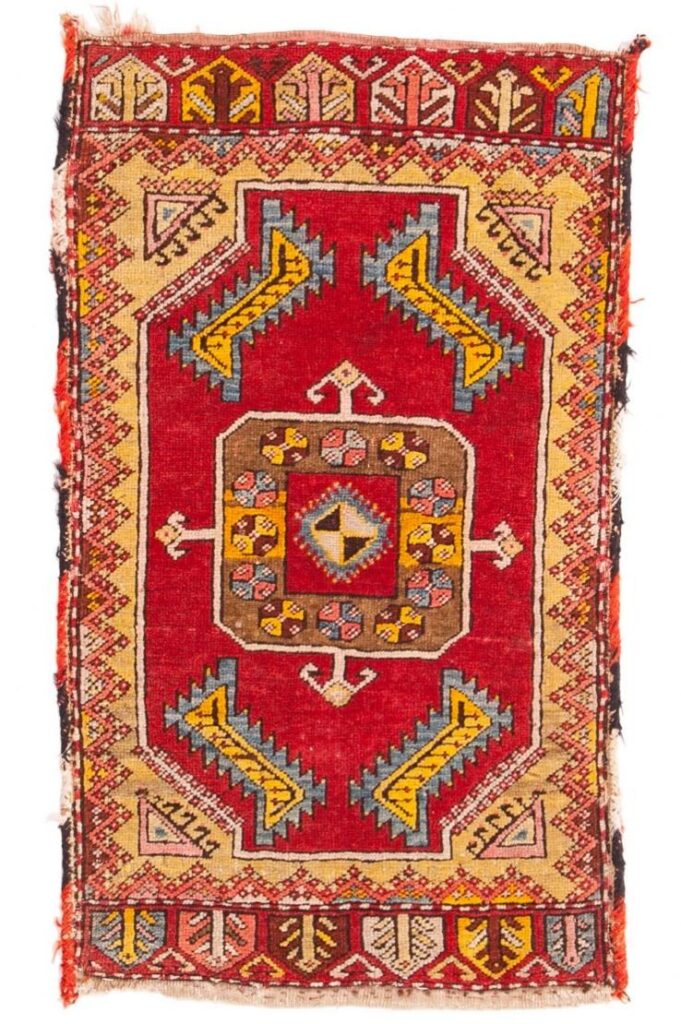Kırşehir Rugs
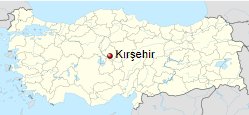
Kırşehir, also Romanized as Kirshehr, is a city in central Anatolia, Turkey. It lies along a tributary of the Kızıl River (Halys River), the longest river wholly within Anatolia.
Kırşehir formerly was known as Mocissus and Justinianopolis, respectively in Greek and Latin. Under the 6th-century Byzantine emperor Justinian I, the city was a major town in the ancient district of Cappadocia.
The Muslim Turks took the city in 1071 and bestowed the current name. It was a stronghold for a Sufi brotherhood. The name, a combination of Turkish and Persian, means “steppe city” or “prairie city”. It became the chief town of a Sanjak in the Ottoman Vilayet of Angora (Ankara Province).
Today it is the capital of the Kırşehir Province, southeast of the Turkish capital. According to the 2000 census, the population of the district is 121,947 of which 105,826 live in the city of Kırşehir. The city is a source for prayer rugs, prayer runners and Yastik mat and cushions woven in the province.
Technical aspects and the structure of Kırşehir Rugs
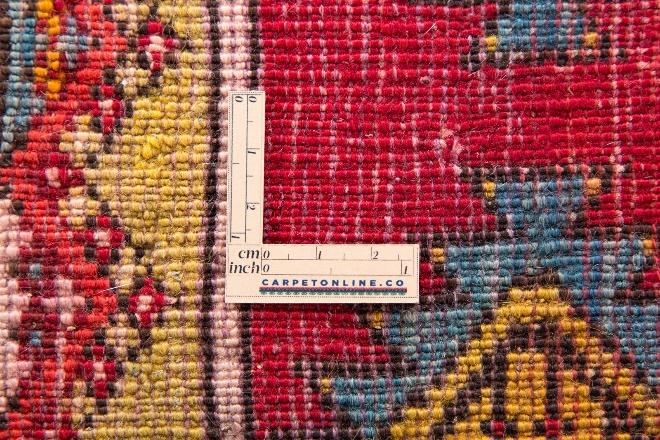
The sort of prayer rugs and runners woven in Kırşehir could be found elsewhere alongside the Kızıl River but here the weave is finer. Kırşehir pieces are the finest in their types.
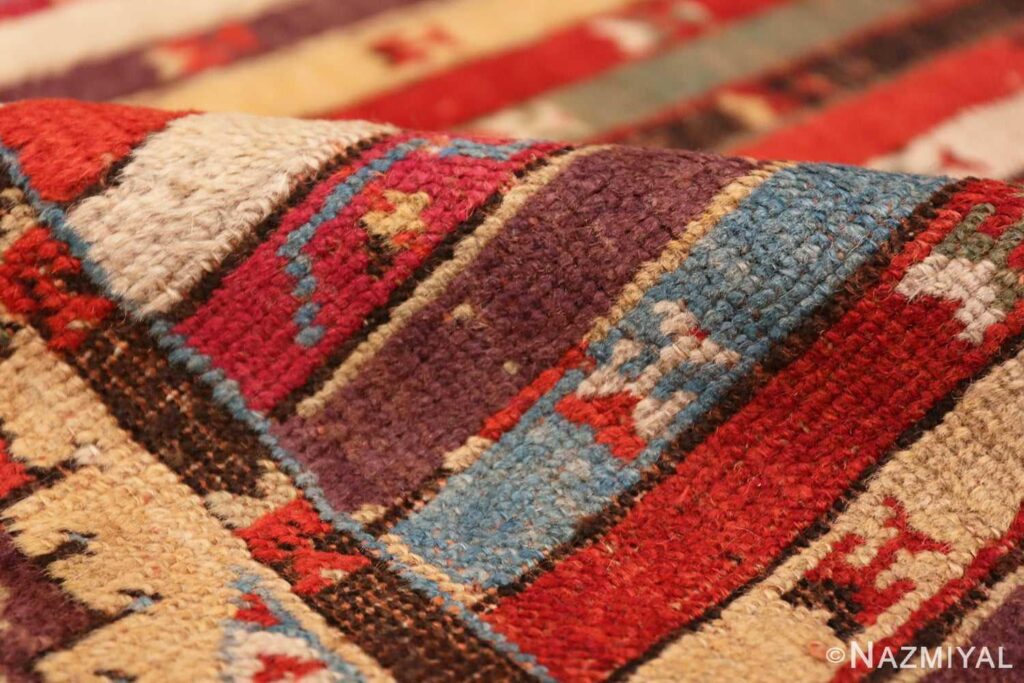
Wool of the area is fine and glossy and pieces are usually woven completely woolen. These are chiefly in rug and runner sizes.
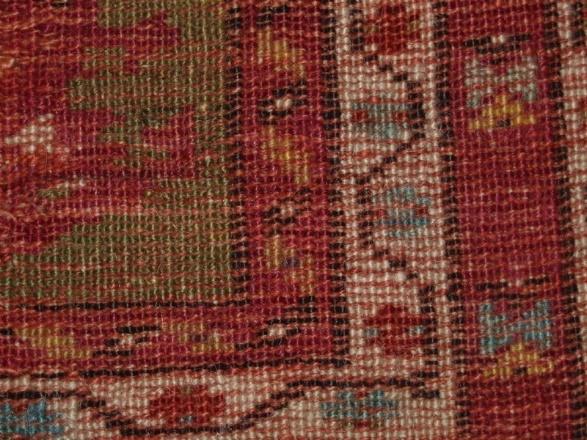
Anatolian yastiks, too, are woven in Kırşehir. These are Anatolian cushion face or pillows. Larger pieces of this kind, without backs, are used as mat.
Dyeing and painting of Kırşehir Rugs
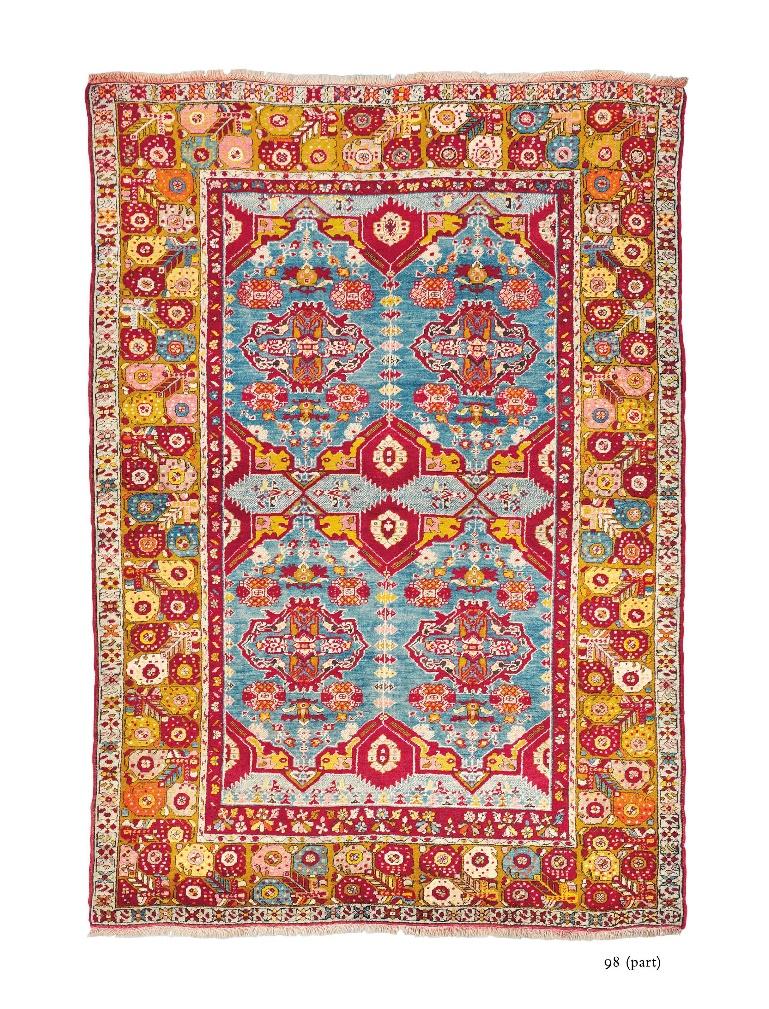
Glossy wool of the area lead to shining palettes. When dyed red, such wool glow like crimson silk. Dark reds are dominant in Kırşehir pieces chiefly in the runners.
Yellow, beige, a very light blue, light green, camel, salmon and apricot are apparent on the secondary palettes of Kırşehir.

Designs and patterns of the Kırşehir Rugs
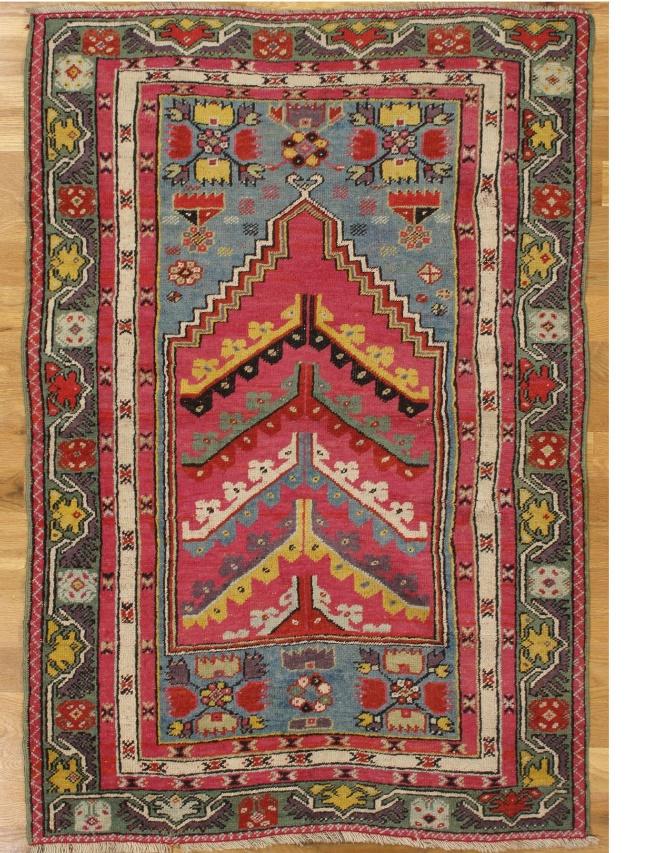
Prayer rugs here have stepped niches with multiple narrow borders. Other designs of the area, too, have distinctive margin designs.
Antique rugs with central medallion show a tendency to a floral style which seems uncharacteristic of Anatolia. This may be the result of fine stich and delicate wool of the area.
Pole medallions applied for runners mostly in triple forms. Nevertheless, the most famous runner design of Kırşehir is formed with long vertical strips in the middle and wide margins designed with floral patterns.
